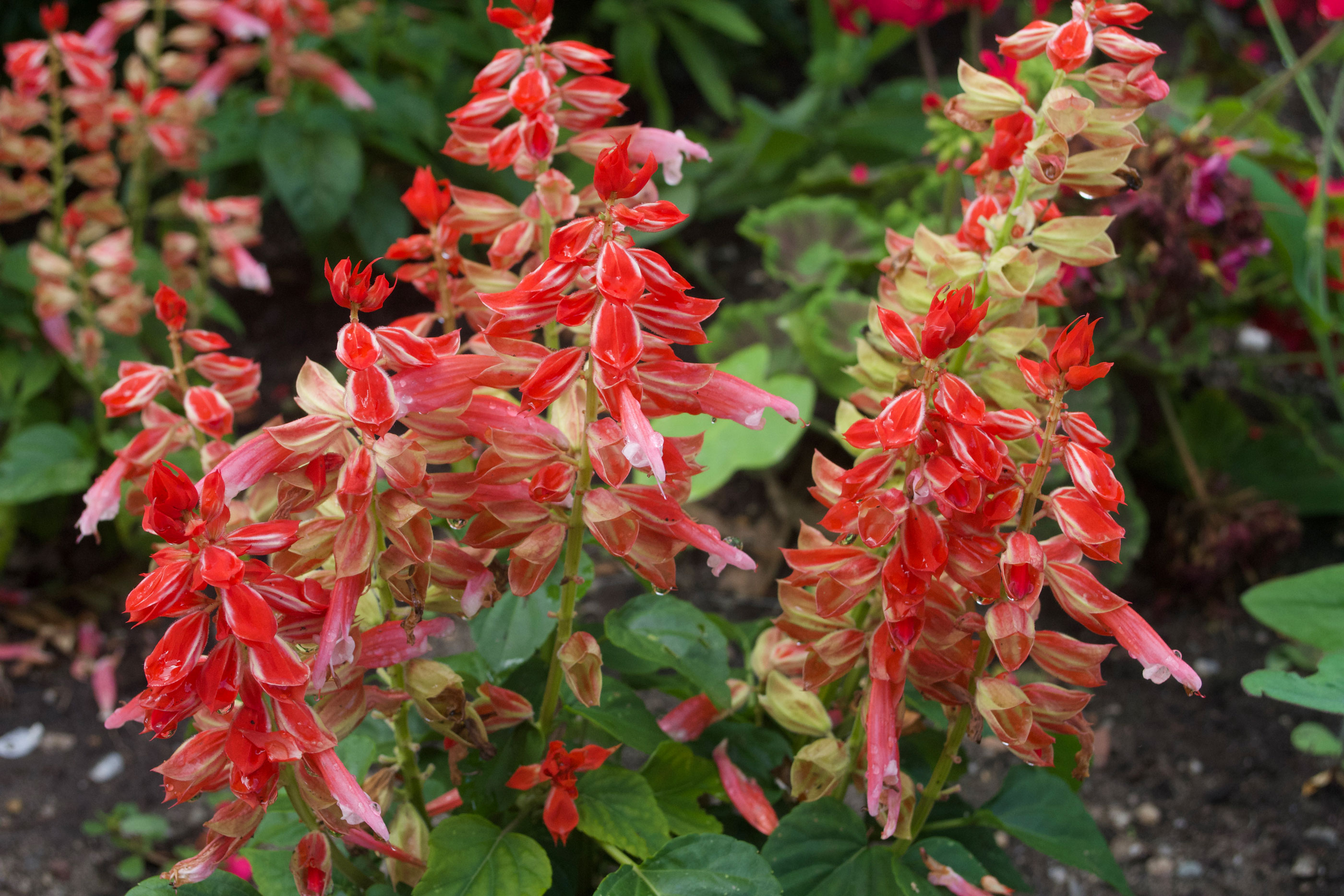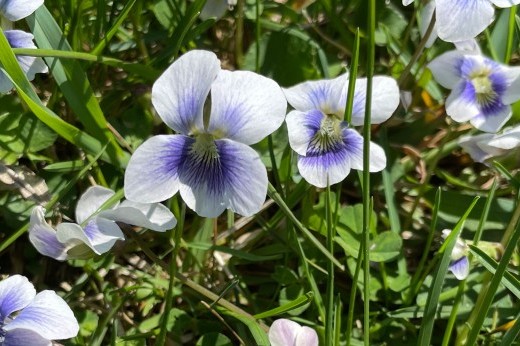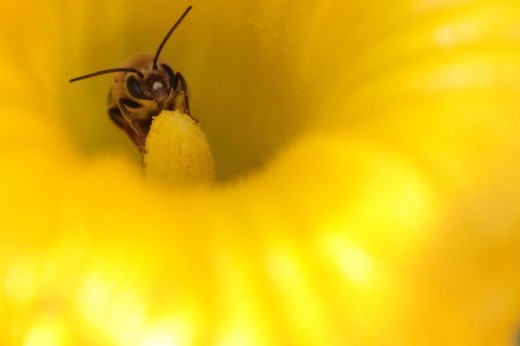This year’s Annual Border is reaching its midsummer peak in an eye-catching swirl of vibrant colors and textures.

The border was curated by BBG gardener Wayken Shaw, who oversees Lily Pool Terrace, Magnolia Plaza, and the Annual and Perennial Borders. Designed as part of our Natural Attractions: A Plant-Pollinator Love Story exhibition and program series, it highlights some of the fascinating forms plants have evolved to attract different insect pollinators.
Guided by interpretive signage, visitors can explore many different shapes and sizes of blooms, which are factors that help determine which pollinators will visit, along with scent, color, and nectar guides. For example, bees often visit shallow flower shapes with a landing pad, while moths can often reach into longer trumpet-shaped blossoms, and beetles tend to go for large, bowl-like shapes.
Bear in mind that many of the plants featured in the Annual Border are nonnative cultivars that have been bred for showy blooms. If you want to support pollinators in your own growing space, it’s typically recommended that you prioritize “straight” (meaning they occur in the wild) native species that coevolved with native pollinators.
Check out some of the standouts from the Annual Border below, and see if you can guess which pollinator might go for each!









Enjoy the blooms!



